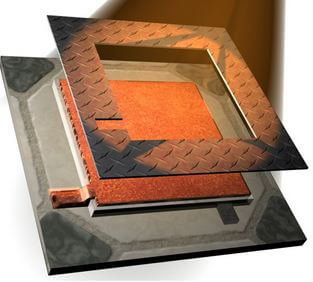A new spray can turn any object into an electric battery

One day we may have to go to the store because we've run out of cathode paint: in June 2012, a team of researchers from Rice University and the Catholic University of Leuven in Belgium announced a new design for a dyed battery. The invention, which was described in the online journal Scientific Reports, may change the way batteries are made, and remove existing limitations on the types of surfaces used to store energy.
Credit: Rice University
The dyed battery consists of five layers: a positive current collector [conductive material used to connect the battery to the circuit], a cathode that attracts positive ions, a separation layer that conducts ions, an anode that attracts negative ions, and a negative current collector. The challenge in each layer was to find a way to combine the electrically conductive materials with different polymers, to create paint that could be sprayed onto surfaces, one layer at a time.
To test their development, the researchers painted batteries on ceramic bathroom tiles, glass, a flexible slide, stainless steel and a ceramic beer mug. To the resulting batteries they connected small electrical circuits to utilize the generated electricity. In one of the experiments, they connected a solar cell to one of the batteries, and used the electricity stored in it, which came from the sun, to operate an LED display.
The painted batteries are not yet ready to occupy the shelves at the nearest building materials store. One of the reasons for this is that the electrolytic separation layer is still unstable in the presence of oxygen. Currently, the battery can only be created under special conditions, because if the separation layer comes into contact with air, it will explode.
Neelam Singh, a member of the team at Rice University, says the researchers are now trying to reduce the strength of the reaction of all materials to air and moisture, and make them more environmentally friendly. According to her, other research groups are working on developing colored solar cells. Singh believes that as a result of these developments, "dyeable solar cells on top of dyed solar cells" will appear. This could turn homes into solar energy collection and storage devices.

2 תגובות
It may be small, if they offer a solution to it then it's a small problem...
In the meantime, they are looking for a solution (another insulated layer, for example...
Aha!!! Just a little problem!!
Say you've lost your mind - it explodes in the presence of air!!!
Is this a small problem?????